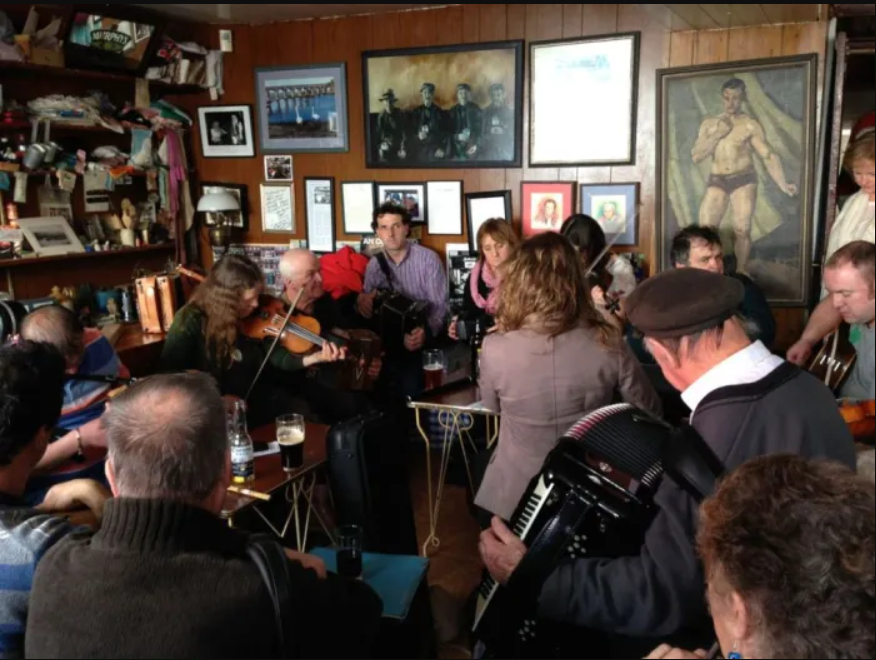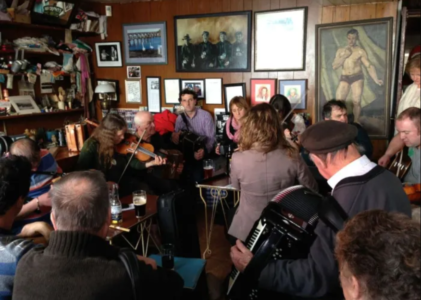Concertina sessions offer an engaging way to experience Irish music. No matter your level, these sessions provide an enjoyable way to discover and learn new tunes.
The concertina is a free-reed instrument equipped with bellows that expand and contract, reed pan, an action pan and buttons at both ends for action. It is considered to be the smaller cousin of an accordion.
What is a concertina?
A concertina is a type of free-reed instrument, producing sound by forcing air past a vibrating reed. As with other free-reed instruments, a concertina can produce individual notes or chords when played together with others.
Concertinas have long been an integral part of folk music traditions worldwide. Additionally, certain types are associated with specific genres of music like classical and tango.
The concertina family comprises instruments with different systems that differ by how their keys (buttons) are arranged and whether or not they produce similar or discordant notes when air passes over them. Examples of such systems include Anglo-German and English concertinas, German bandoneons, and others that can be found across numerous folk music traditions worldwide.
Jeffries and Wheatstone systems are two of the most frequently seen concertina layouts. Irish concertina players typically favor Jeffries while Wheatstone instruments tend to be better-suited to playing classical or Western music.
How do I play a concertina?
The concertina is a free reed instrument that employs metal reeds that vibrate when air flows around them, producing sound. This type of instrument resembles both accordion and melodeon in terms of sound production.
To play a concertina you must first learn to press and hold the air button while using your fingers to push or pull on the bellows. While this may take some getting used to initially, once it becomes second nature it becomes much simpler.
Start by pressing G on the left side of your concertina using either finger or thumb and switch between pushing and pulling on its bellows.
As time progresses, you’ll become adept at playing your concertina without assistance! Once you have learned the basic technique of concertina playing, you can move onto learning new buttons.
John Williams is an award-winning accordion and concertina player and will provide you with all of the skills needed to hold and operate a 20 or 30-key Anglo concertina with ease, from using its keys, bellows, air button and air bell. In this DVD tutor he also teaches five tunes note for note, such as Oro (Se Do Bheatha Bhaile), Jimmy Ward’s Jig, Kesh Jig and Bobby Casey’s Jig.
What are the differences between a concertina and an accordion?
Concertinas are reed instruments that resemble accordions but differ significantly in several important ways. Like their accordions counterparts, concertinas use bellows to generate sound by forcing air past a vibrating reed.
Reeds have bellows that can be adjusted to alter their tone or chord by pressing buttons that act similarly to piano keys, while metal reeds ensure clear and clean sounding notes.
Concertinas come in various sizes, ranging from trebles that mimic violin’s range all the way down to bass concertinas that go one octave lower; additionally, baritone and tenor models cover similar territory but go further still.
Each button produces one note when pressed; they may also produce two distinct notes when pulled and pushed – something not found on an accordion! This unique characteristic gives these instruments their distinct feel from one another.
What are the benefits of playing a concertina?
Chad and Angie Mack have an eight-year-old son named Cameron who spends much of his free time practicing concertina playing in their heated garage. Cameron loves this activity so much that he plays multiple times each weekend!
As with an accordion and melodeon, a concertina is a free reed instrument without chords; unlike harmonicas or guitars.
Play the concertina by pressing air into it with either your thumb or index finger – known as an “air button.”
To play a note, locate it on one side of your concertina and press it with your thumb or index finger – depending on what kind of concertina it may differ depending on which side is exposed – this could differ depending on which kind it is.
Irish concertina players usually use Anglo concertinas. These instruments feature fully chromatic design with two center rows on either side tuned to C, plus some accidentals distributed between outside rows.


